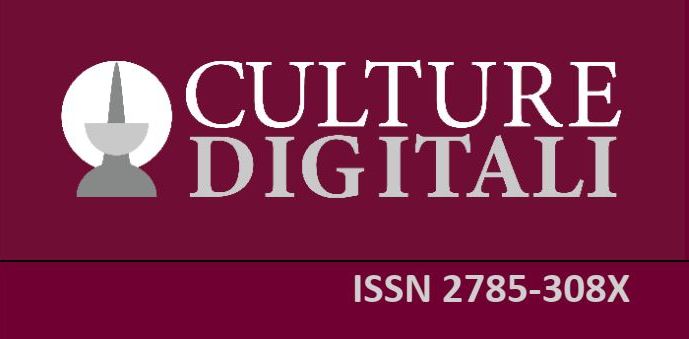by Agita*
Computer screens connected and conversing between humans at a distance and in deferred… Looking back at films or photos from 2020 -21, with covid-19 walking around the world, images of confined and distanced cities and people are still etched in our memory. The spaces of collective living, spaces dedicated to work, leisure, spaces dedicated to culture, are closed. If you look closer into the windows of homes, you enter private rooms that have become workplaces for adults, classrooms for students of all ages engaged in DL (Distance Learning). Distance learning also affected the theatre projects and workshops planned at the beginning of the school year. What can we do when it is impossible to work together in presence?
Doing and seeing theatre, not only in education, requires the presence of people, in a physical time and space, it also requires the presence of the actor who acts and the spectator who participates in the unfolding of the action.
The distance between them is an incongruity, and however… However, there were School and Community Theatre Reviews (1) that accepted the challenge in 2021, presenting a number of work proposals that created moments to reflect on: the experimentation of innovative and digital models at the centre of today’s social, anthropological, educational and economic attention.
Making a virtue of necessity does not mean lowering the bar: the challenge is how to overcome the situation through the use of the tools and means available, so that research, imagination, creativity, hybridisation of techniques and content are activated to overcome the impasse.
There is a documentation of these young people’s works, which were creatively ‘packaged’ at the level of images and action sequences. Assembled remotely, using various examples such as: comics and animation and creative texts. All this confirms to us that collective work is the basis for achieving the goal, which remains the desire/need to communicate with the others.
Theatre is a team game, you know, so what’s the difference? Is it possible that the in-presence experience, so important also in response to fragility and loneliness, to inclusion and confrontation, to identity in formation, to listening ability and willingness of dialogue, to respect for the views and ‘visions’ of young citizens, and so on the values, can go hand in hand with the virtual experience?
We think so, and in fact in the 2022 edition, the school and community theatre reviews have moved on a double track. It would be necessary, however, to pay more attention to that language of the human that is called theatre, to pay more attention when meeting pupils and students, especially by adult ‘decision-makers’ (teachers, parents, public administrators, information officers, etc.).
Training courses in education, the use of artistic languages – in particular theatre – are bearers of a connected and holistic vision, of a modus operandi across disciplines (from Latin discěre meaning to learn). Theatre, therefore, can be considered as a valid support to implement a transformative methodology within a school curriculum. However, this aspect must be elaborated as a resource for an effective organicity of the various types of
educational offers the school makes available to students. There are many testimonies where the digital aspect of communication translates into creative experience. Many testimonies concerning theatre in its ‘extended’ form, to be able to grasp the media language (not only of young people) and to be able to transform it into an action that we could call ‘from you to me’.
In doing so, reading through the memories of online messages, we can discover that thanks to the TikTok social channel, we can read and discover new books (#booktok), we can truly interact with those who have made these tools a language that should not be demonised, nor underestimated.
The pandemic, in focusing on the role of communication and socialisation technologies, highlighted the issues of inhabiting the digital world.
The school remains an outpost, but – there is always a but – in our country it would be urgent to think about a serious general reform of the educational institution, get in step with the times and interactive with the outside world.
It is surprising that Mission 4 of the National Recovery and Resilience Plan in the section “Education and Research” in talking about “strengthening the education system, digital and STEM competences, research and technology transfer” and in highlighting the expected skills to be used in the world of work and everyday life (Collaboration, Critical thinking, Communication, Creativity) make no reference, regarding the acquisition of these skills, to the languages of Art!
In short, to plan/prepare change it is always useful to know the “past” and filter it, otherwise the feet of the giant of a (pseudo) modernization are made of clay.
Among the many virtual squares that open, leave open the opportunity to measure up with the theater to do and see, which other square of human encounter, would be a sign of realistic perspective vision.
*Agita is a national association, founded in 1994, to enhance theatrical and artistic practice in education and community. Many activities are carried out: projects for local and institutional administrations, partnerships in specific EU projects, training courses for teachers and students, conferences, meetings, publications of articles in specialized magazines and books. Agita is a training center with accreditation to the Ministry of Education (DM 170/2016). It is a member of the International Drama/Theatre Education Association (IDEA).
Note
(1) The “review” is a particular Italian initiative, which began in the 90s of the last century, to give visibility to the theatrical and sociocultural paths of the school and the territory. To give visibility to innovative experiences of training, drama research and communication, as well as economic driving force in the realities in which it takes place. At the beginning of 2000 there were about 100 reviews, now there are 32 variously distributed nationally.
